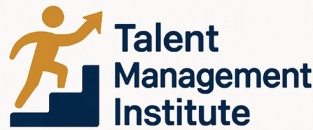
Understanding the Role of HR Document Management
Recognizing the Foundations of HR Document Management
In the realm of human resources, document management plays a pivotal role by ensuring that sensitive employee information is handled with precision and care. It’s essential for maintaining compliance and protecting employee privacy. Understanding the core elements of HR document management entails streamlining the way employee files, such as performance reviews and employee records, are organized and accessed.
The management of documents in HR doesn't just involve handling paper files. Today, organizations utilize advanced document management systems to enhance efficiency. These systems, often cloud based, offer secure document storage and facilitate automated workflows, making it easier for HR professionals to access documents as needed. A robust document management software can help prevent data breaches, ensure data security, and streamline business processes.
One of the foundational goals in HR document management is to save time and effort during document retrieval and storage. Ensuring that employee documents are organized efficiently allows businesses to access critical information swiftly, ultimately boosting productivity and enhancing overall business functions.
Effective file management also involves ensuring that the system for storing employee files is user-friendly. This ensures that human resource professionals can easily find the data they need without unnecessary delays. Implementing best practices for document management is crucial for securing business data and facilitating seamless HR processes.
As more organizations transition to digital document systems, the features offered by document software become increasingly critical. The ability to secure digital documents with appropriate access controls is vital for protecting sensitive employee information. Thus, businesses are investing in management software that combines file management capabilities with advanced security features to safeguard their operations.
For businesses looking to optimize their HR document management, seeking expert guidance can be particularly beneficial. Learn more about navigating the complex world of human resources by exploring this informative resource.
Key Challenges in HR Document Management
Challenges Faced in Handling HR Documentation
HR document management is fraught with several challenges that require careful navigation to ensure efficiency and compliance. Understanding these challenges is a critical step towards optimizing the management of employee documents and files.
One of the primary concerns is the sheer volume of documentation that human resources departments must handle. This includes sensitive employee information such as employee records, performance reviews, and compliance documents. Without an effective document management system, keeping track of these documents and ensuring secure access becomes a cumbersome task.
Security is another significant issue, as employee files often contain sensitive data. The need for secure storage solutions to protect this information from unauthorized access cannot be overstated. Businesses must ensure that their document management systems are equipped with robust security features to prevent data breaches and maintain compliance with regulations.
Additionally, the transition from physical to digital document management poses its own set of challenges. While digital documents offer improved accessibility and file management, the transition process must be carefully managed to avoid the loss of important data. This transition involves not only digitizing existing documents but also managing the new workflows that a cloud-based system introduces.
Time spent on document management can also be a strain on human resources teams. Without automated workflows and efficient software solutions, employees may find themselves dedicating excessive time to file management tasks that could otherwise be streamlined.
Addressing these challenges requires an integrated approach, combining technology with best practices, to form a cohesive strategy. By improving systems for accessing and managing documentation, HR departments can navigate the complexities of modern employee document management more effectively.
Best Practices for Efficient Document Management
Implementing Best Practices for Efficient Document Management
Effective document management in talent management revolves around a strategic approach to streamline processes, ensuring smooth handling and secure storage of employee documents. Here are several best practices that can significantly enhance your HR document management:- Centralized Document Storage: Investing in reliable document management software can help consolidate all employee files and sensitive employee data in one place. This eliminates redundancy and simplifies access, enabling HR managers to locate and manage documents effortlessly.
- Automated Workflows: Leveraging automated workflows can significantly reduce the time taken to process documents. Automation ensures employee records are updated promptly, thus maintaining data accuracy and reducing manual errors. Consider document software that features automation tools to expedite tasks like performance reviews and compliance checks.
- Emphasizing Security and Compliance: Employee documents often contain sensitive information, making security paramount. A robust document management system incorporates secure access, encryption, and compliance with legal regulations to protect data both on-premise and in cloud-based solutions. Ensuring compliance with data protection laws is critical in maintaining trust and integrity within your workforce.
- Accessibility and Usability: It's crucial that your document management software prioritizes intuitive interfaces and easy access to documents for authorized users. Features like mobile connectivity and remote access enhance productivity, especially in today’s flexible work environments.
- Regular Updates and Maintenance: Regularly updating your management software ensures that your system stays up-to-date with the latest features and security patches. This underscores the importance of choosing a vendor that actively supports and innovates in the document management sphere.
The Impact of Technology on HR Document Management
Technology's Profound Influence on Document Handling
The integration of technology into HR document management has brought forth transformative changes in how human resources manage sensitive employee files and records. With advancements in digital document storage and management software, businesses can now achieve unprecedented levels of efficiency and security.
Previously, manual file management required physical storage and was prone to errors and data loss. However, the digital age's document systems now allow for seamless and secure storage of employee documents in cloud-based environments. This shift has not only ensured better protection of sensitive employee information but also allowed for instant access to crucial employee documents whenever the need arises.
Enhanced Productivity through Software Solutions
One of the key features of modern document management systems is the adoption of automated workflows. By automating processes such as performance reviews and document compliance, HR departments can significantly reduce the time spent on administrative tasks, thus freeing up capacity for more strategic employee-focused initiatives. Management software offers bespoke solutions that cater to the specific demands of different businesses, providing tailored workflows that enhance overall productivity.
Moreover, improved file management systems have allowed for better tracking and management of employee records. Businesses can now ensure that every document, from employee files to compliance documentation, is accurately maintained and easily retrieved as needed. This ensures compliance with industry standards and contributes significantly to the operational efficiency of human resources departments.
Secure Access and Data Management
The importance of security in document storage cannot be overstated. With advanced cloud-based software, employees and HR managers are given secure access to files and data, ensuring that they are protected from unauthorized access and breaches. Encryption technologies and user-specific access controls have become standard in document management systems, reinforcing the protection of sensitive data.
In essence, the impact of technology on HR document management has not only enhanced workflow efficiency but has also strengthened data security measures. The ability to quickly access documents while maintaining stringent security protocols has made it integral to modern HR operations, aligning with the broader objectives of efficient talent management systems.
Integrating HR Document Management with Talent Management Systems
Maximizing Efficiency Through Integrated Systems
Integrating HR document management with talent management systems is crucial in today's digital era. A seamless integration ensures that employee records are maintained accurately and accessed efficiently, enhancing overall business productivity. Let's explore how this integration can transform your management approach. Firstly, alignment between document management and talent systems allows for automated workflows, reducing the time and effort required to manage employee files. This automation aids in maintaining updated records, ensuring that every employee document, from performance reviews to compliance certificates, is securely stored and easily retrievable. Moreover, integrated systems provide centralized storage, supporting compliance with data security regulations. By utilizing cloud-based solutions, organizations can further secure sensitive employee information. These digital document management tools offer multiple features that facilitate efficient data access while maintaining high security. Key benefits of such integration include improved data accessibility and streamlined management workflows. Employees and HR personnel can access documents needed for decision-making without delays, directly impacting the effectiveness of talent management strategies. Effective file management can enable timely performance reviews and other critical evaluations, directly influencing employee development plans. Finally, having a unified system minimizes redundant data entry, leading to fewer errors and more reliable employee records. With an increase in business efficiency and reduced administrative burden, organizations can better focus on their core goal: nurturing and retaining talent.Future Trends in HR Document Management
Navigating the Future of HR Document Management
The future of HR document management is poised for significant evolution as businesses strive to adapt to the growing demands for efficiency, security, and compliance in the handling of sensitive employee files. As organizations continue to recognize the importance of effective document management strategies, several trends are emerging that will shape the landscape of HR operations.- Automation and AI Integration: Automation is becoming pivotal in streamlining workflows. Automated workflows are not only reducing the time spent on manual file management but also minimizing human errors. Artificial Intelligence is being integrated into document management software to enhance data analytics, categorization, and to provide faster access to employee documents, making file retrieval seamless.
- Cloud-Based Solutions: There is a noticeable shift towards cloud-based document storage, offering scalable solutions for document access. Cloud technologies provide flexibility and remote access, enabling HR teams to manage employee records efficiently while ensuring that compliance standards are met.
- Enhanced Security Measures: With the rise of digital document management, security of sensitive employee data has become crucial. Advanced security measures, including encryption and access controls, are vital components of modern document management systems to prevent unauthorized access and breaches.
- Focus on Employee Experience: Future systems are likely to focus more on improving the employee experience by offering self-service portals for employees to access their records, performance reviews, and other pertinent documents securely, enhancing transparency and engagement.
- Integration with Talent Management Systems: A collaborative approach that integrates HR document management systems with broader talent management solutions will streamline HR functions, creating a cohesive environment where data flows seamlessly to support decision-making processes.













